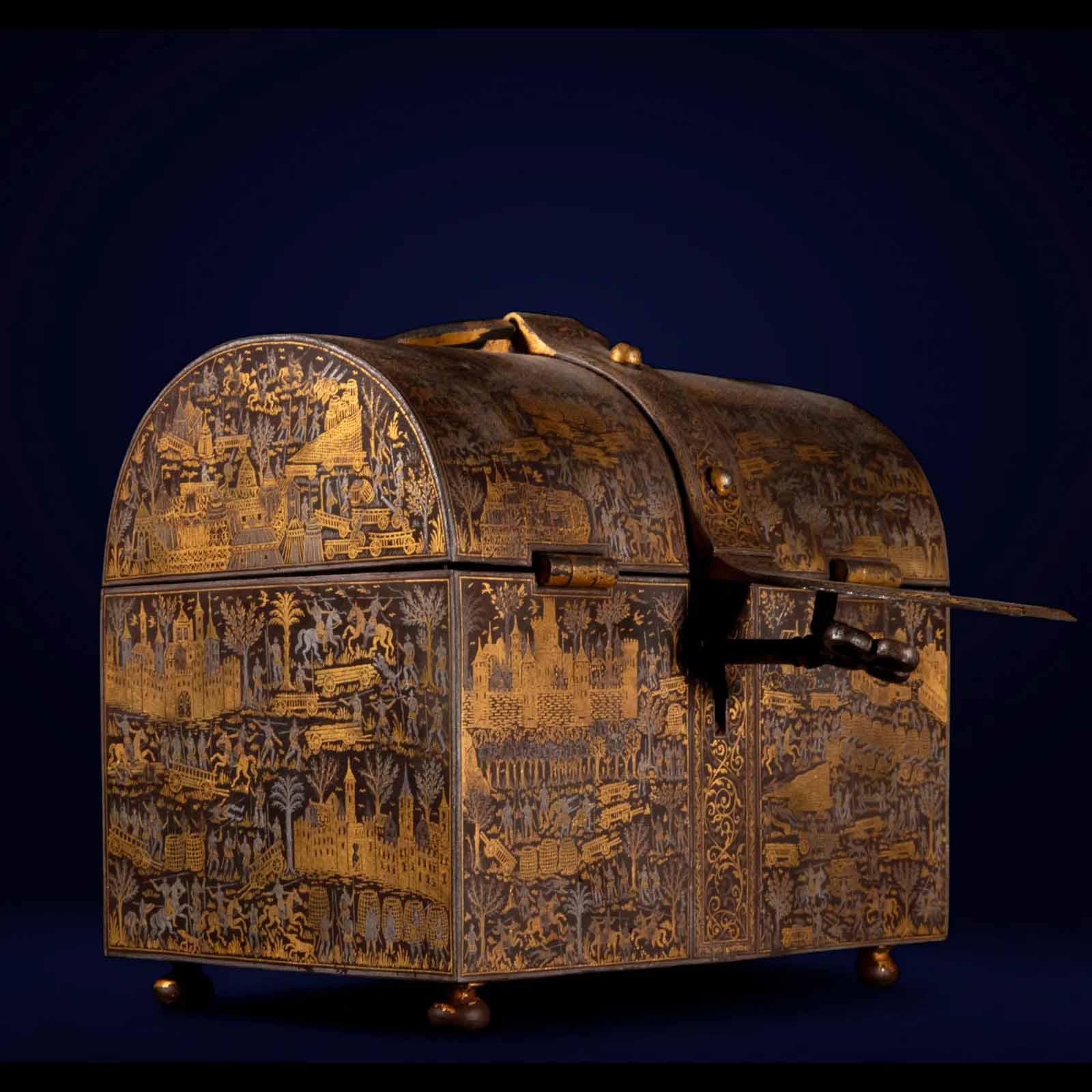BARCELONA, SPAIN — A potentially important 16th-century damascened casket depicting Henry VIII campaigns in northern France will be presented on Thursday, May 23. The iron and gold inlaid dome-lidded casket is attributed by Templum Fine Art Auctions to Diego de Çaias, the celebrated Spanish armorer who served at the Henrician court from 1542 to 1547. Consigned from an ‘important Madrid estate’, it carries an estimate of €1 million-€1.5 million ($1 million-$1.6 million).
Measuring 8in (20cm) wide, the chest is adorned with 12 different scenes of fortified cities surrounded by an army of foot soldiers, cavalry, seize engines, and cannons, thought to relate to the two sieges of Boulogne sur Mer (1544-1546), a city on the northern coast of France. In what was the largest continental land grab by an English monarch since the Hundred Years War, the siege resulted in the brutal depopulation of the local Boulonnaise and the arrival of English settlers.
Although short-lived – the territory was effectively rescinded in 1550 – at the time, Henry VIII’s conquest was commemorated in triumphal paintings that were displayed at the Palace of Whitehall in London, which was then the main residence of English monarchs, and by a series of paintings commissioned by Sir Anthony Browne in 1545 for Cowdray House in Midhurst, England. Templum said the scenes on the casket closely resemble the Cowdray House paintings which, although lost to fire, are known through engravings.
Diego de Çaias worked for the French court from 1535 to 1542 before moving to London to work at the court of Henry VIII. A similar casket, decorated with hunting scenes, is part of the Waddesdon bequest to the British Museum, while a sword and scabbard also made to commemorate the capture of Boulogne sur Mer from the French in 1545 is in the Royal Collection. The latter is thought to be one of the items described in the inventory of the King’s possessions taken after his death in the latter year as ‘iij longe woodknives ij of them of Dego his makinge’. Having left the royal collection before the 19th century, it was acquired by Queen Elizabeth II in 1966.



